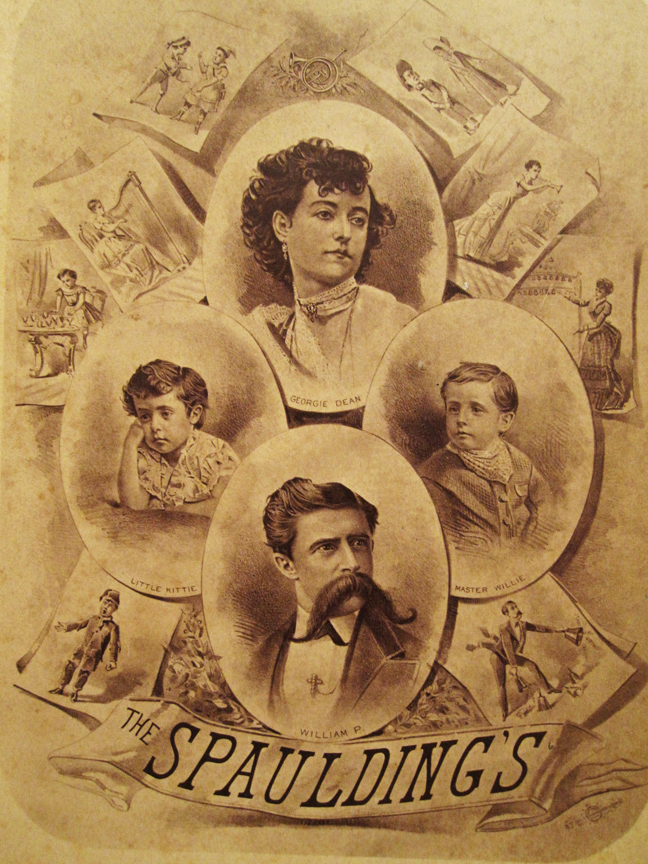
Spauldng Brothers’ Swiss Bell Ringers
Dorchester Illustration 2643
Swiss bell ringers came to the United States in the 1840s, bell ringing became popular entertainment, often part of a larger show. John Franklin Spaulding, a violinist from Boston joined the Swiss Bell Ringers group. In 1866, John and some of his relatives set themselves up as Spaulding Brothers’ Swiss Bell Ringers. Georgia Dean and William Spaulding (John’s cousin), both harpists, married in 1865. The family eventually set up a permanent residence in the Neponset section of Dorchester.
The following excerpts comes from
“Georgie Dean Spaulding was the real deal, and she set the Spaulding Bell Ringers apart. Nor was William a slouch; one writer noted, “ ‘Mr. Spaulding is one of the most versatile performers in the profession, playing on any instrument from a harp down to a penny trumpet, while his solo on the bass bells is said to be wonderful.’
“John Spaulding returned to the Peak Family (a touring group of musicians) in 1870, making William the sole manager of the Spaulding Bell Ringers. Georgie added the cornet to her repertoire, hired another cornet player, Nellie Daniels, and the troupe became known as the Spaulding Bell Ringers and Ladies’ Cornet Band. When Georgie acquired a gold cornet, the name stretched out to The Spaulding Bell Ringers and Ladies’ Gold & Silver Cornet Band.
“Over the next ten years, the troupe toured extensively in the eastern U.S. and Canada. They packed every hall, at 35 cents a seat. They played New York for eight weeks. In Montreal, they played Queen’s Hall for three days, and 1600 tickets were sold for a single matinee performance.
“Georgie was something of a marvel. One of her set pieces was to play, “Yankee Doodle” with one hand on the harp strings and “The Fisher’s Hornpipe” with the other, and sing “Tramp, Tramp, Tramp, The Boys Are Marching,” a Civil War favorite, at the same time. More than one reviewer noted that all three melodies could be heard distinctly. Her husband and manager proclaimed, “ ‘Her execution of three different and difficult melodies at one time is the wonder of the 19th century.’
“She was also unflappable. On one occasion as she played the harp, the fashionably tight sleeves of her new dress cut off the circulation to her hands. She stopped playing for a moment, produced a pen knife, calmly slit the sleeves, and resumed playing to thunderous applause.”
